Georgia Maniati
Improved Text Emotion Prediction Using Combined Valence and Arousal Ordinal Classification
Apr 02, 2024
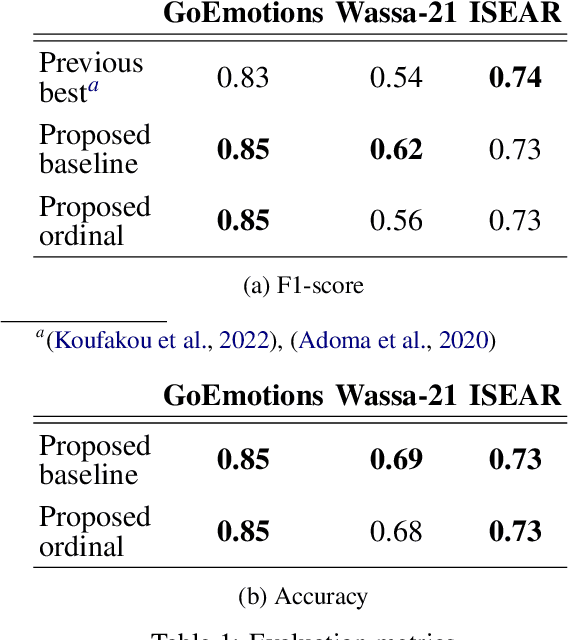
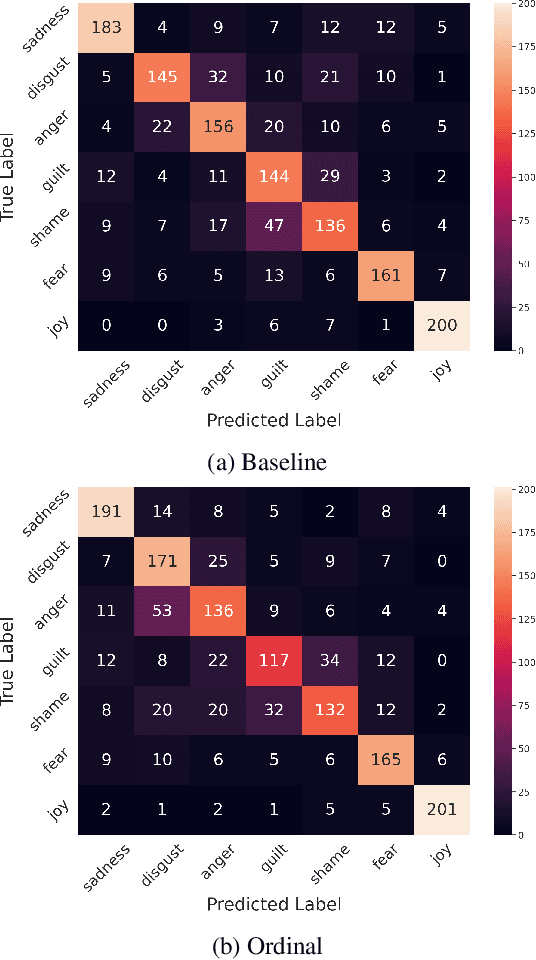
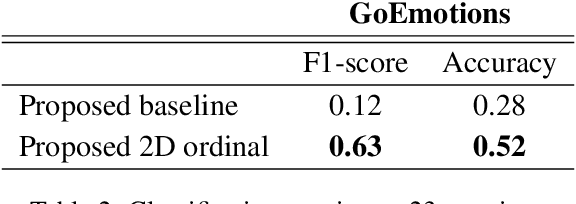
Abstract:Emotion detection in textual data has received growing interest in recent years, as it is pivotal for developing empathetic human-computer interaction systems. This paper introduces a method for categorizing emotions from text, which acknowledges and differentiates between the diversified similarities and distinctions of various emotions. Initially, we establish a baseline by training a transformer-based model for standard emotion classification, achieving state-of-the-art performance. We argue that not all misclassifications are of the same importance, as there are perceptual similarities among emotional classes. We thus redefine the emotion labeling problem by shifting it from a traditional classification model to an ordinal classification one, where discrete emotions are arranged in a sequential order according to their valence levels. Finally, we propose a method that performs ordinal classification in the two-dimensional emotion space, considering both valence and arousal scales. The results show that our approach not only preserves high accuracy in emotion prediction but also significantly reduces the magnitude of errors in cases of misclassification.
Low-Resource Cross-Domain Singing Voice Synthesis via Reduced Self-Supervised Speech Representations
Feb 02, 2024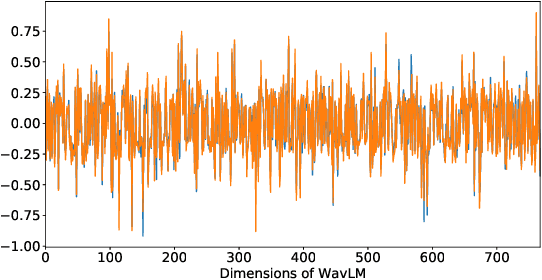

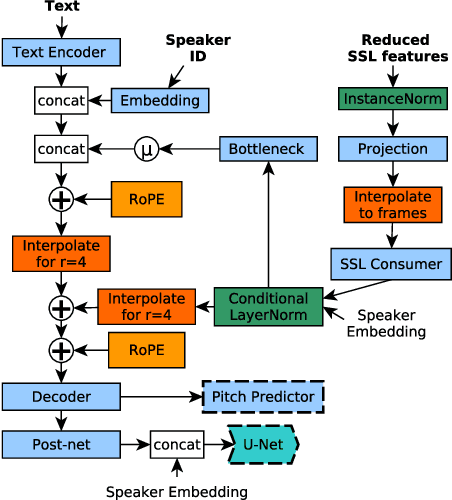
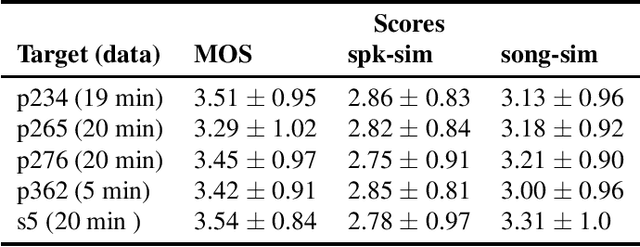
Abstract:In this paper, we propose a singing voice synthesis model, Karaoker-SSL, that is trained only on text and speech data as a typical multi-speaker acoustic model. It is a low-resource pipeline that does not utilize any singing data end-to-end, since its vocoder is also trained on speech data. Karaoker-SSL is conditioned by self-supervised speech representations in an unsupervised manner. We preprocess these representations by selecting only a subset of their task-correlated dimensions. The conditioning module is indirectly guided to capture style information during training by multi-tasking. This is achieved with a Conformer-based module, which predicts the pitch from the acoustic model's output. Thus, Karaoker-SSL allows singing voice synthesis without reliance on hand-crafted and domain-specific features. There are also no requirements for text alignments or lyrics timestamps. To refine the voice quality, we employ a U-Net discriminator that is conditioned on the target speaker and follows a Diffusion GAN training scheme.
Generating Gender-Ambiguous Text-to-Speech Voices
Nov 01, 2022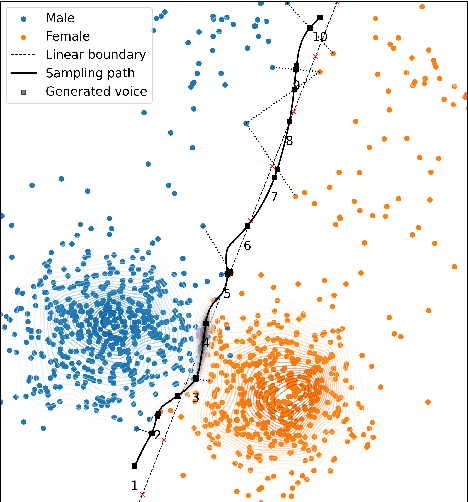


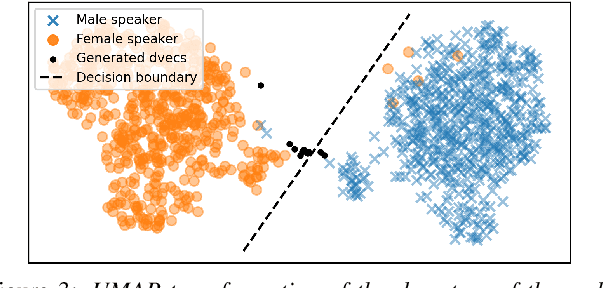
Abstract:The gender of a voice assistant or any voice user interface is a central element of its perceived identity. While a female voice is a common choice, there is an increasing interest in alternative approaches where the gender is ambiguous rather than clearly identifying as female or male. This work addresses the task of generating gender-ambiguous text-to-speech (TTS) voices that do not correspond to any existing person. This is accomplished by sampling from a latent speaker embeddings' space that was formed while training a multilingual, multi-speaker TTS system on data from multiple male and female speakers. Various options are investigated regarding the sampling process. In our experiments, the effects of different sampling choices on the gender ambiguity and the naturalness of the resulting voices are evaluated. The proposed method is shown able to efficiently generate novel speakers that are superior to a baseline averaged speaker embedding. To our knowledge, this is the first systematic approach that can reliably generate a range of gender-ambiguous voices to meet diverse user requirements.
Investigating Content-Aware Neural Text-To-Speech MOS Prediction Using Prosodic and Linguistic Features
Nov 01, 2022
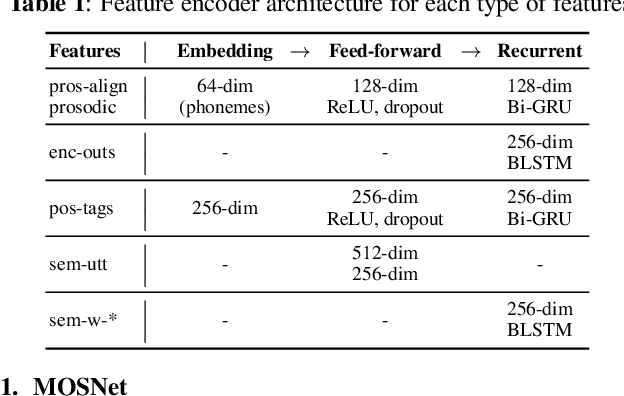
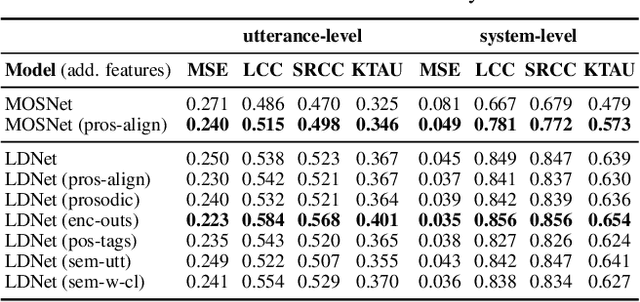
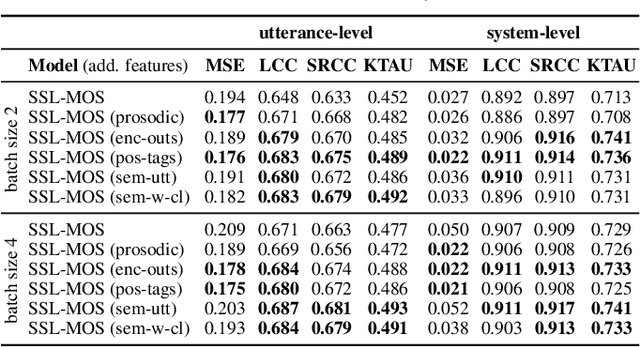
Abstract:Current state-of-the-art methods for automatic synthetic speech evaluation are based on MOS prediction neural models. Such MOS prediction models include MOSNet and LDNet that use spectral features as input, and SSL-MOS that relies on a pretrained self-supervised learning model that directly uses the speech signal as input. In modern high-quality neural TTS systems, prosodic appropriateness with regard to the spoken content is a decisive factor for speech naturalness. For this reason, we propose to include prosodic and linguistic features as additional inputs in MOS prediction systems, and evaluate their impact on the prediction outcome. We consider phoneme level F0 and duration features as prosodic inputs, as well as Tacotron encoder outputs, POS tags and BERT embeddings as higher-level linguistic inputs. All MOS prediction systems are trained on SOMOS, a neural TTS-only dataset with crowdsourced naturalness MOS evaluations. Results show that the proposed additional features are beneficial in the MOS prediction task, by improving the predicted MOS scores' correlation with the ground truths, both at utterance-level and system-level predictions.
Learning utterance-level representations through token-level acoustic latents prediction for Expressive Speech Synthesis
Nov 01, 2022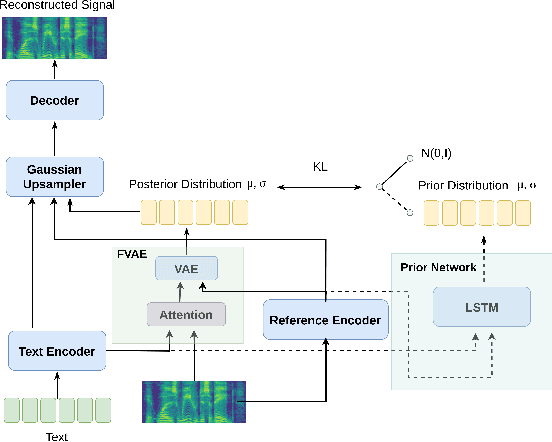
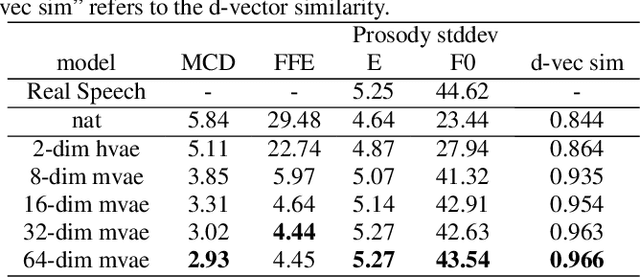
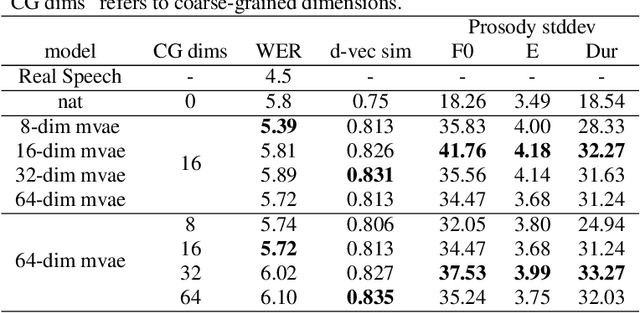

Abstract:This paper proposes an Expressive Speech Synthesis model that utilizes token-level latent prosodic variables in order to capture and control utterance-level attributes, such as character acting voice and speaking style. Current works aim to explicitly factorize such fine-grained and utterance-level speech attributes into different representations extracted by modules that operate in the corresponding level. We show that the fine-grained latent space also captures coarse-grained information, which is more evident as the dimension of latent space increases in order to capture diverse prosodic representations. Therefore, a trade-off arises between the diversity of the token-level and utterance-level representations and their disentanglement. We alleviate this issue by first capturing rich speech attributes into a token-level latent space and then, separately train a prior network that given the input text, learns utterance-level representations in order to predict the phoneme-level, posterior latents extracted during the previous step. Both qualitative and quantitative evaluations are used to demonstrate the effectiveness of the proposed approach. Audio samples are available in our demo page.
Cross-lingual Text-To-Speech with Flow-based Voice Conversion for Improved Pronunciation
Oct 31, 2022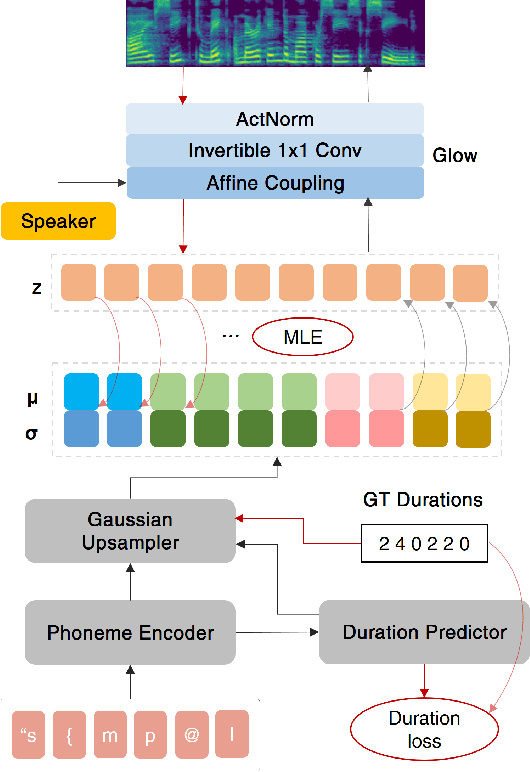
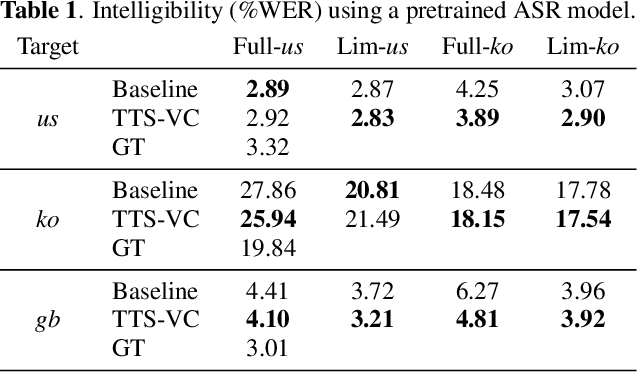

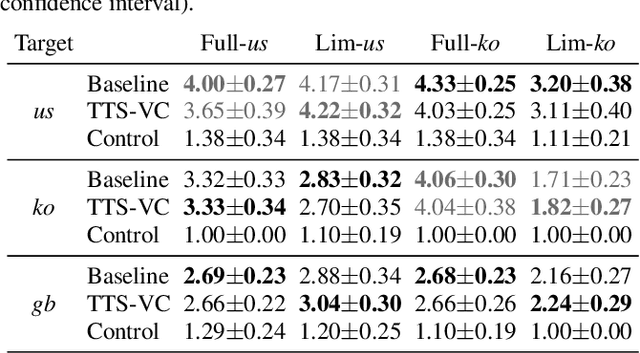
Abstract:This paper presents a method for end-to-end cross-lingual text-to-speech (TTS) which aims to preserve the target language's pronunciation regardless of the original speaker's language. The model used is based on a non-attentive Tacotron architecture, where the decoder has been replaced with a normalizing flow network conditioned on the speaker identity, allowing both TTS and voice conversion (VC) to be performed by the same model due to the inherent linguistic content and speaker identity disentanglement. When used in a cross-lingual setting, acoustic features are initially produced with a native speaker of the target language and then voice conversion is applied by the same model in order to convert these features to the target speaker's voice. We verify through objective and subjective evaluations that our method can have benefits compared to baseline cross-lingual synthesis. By including speakers averaging 7.5 minutes of speech, we also present positive results on low-resource scenarios.
SOMOS: The Samsung Open MOS Dataset for the Evaluation of Neural Text-to-Speech Synthesis
Apr 06, 2022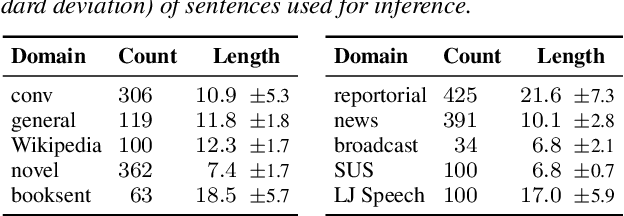
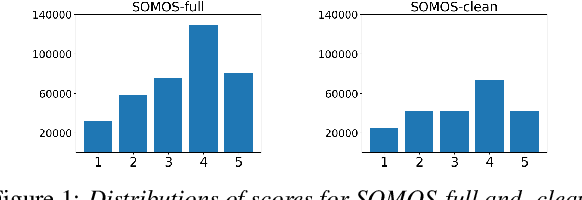
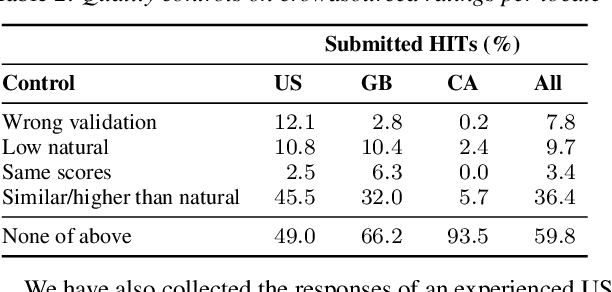

Abstract:In this work, we present the SOMOS dataset, the first large-scale mean opinion scores (MOS) dataset consisting of solely neural text-to-speech (TTS) samples. It can be employed to train automatic MOS prediction systems focused on the assessment of modern synthesizers, and can stimulate advancements in acoustic model evaluation. It consists of 20K synthetic utterances of the LJ Speech voice, a public domain speech dataset which is a common benchmark for building neural acoustic models and vocoders. Utterances are generated from 200 TTS systems including vanilla neural acoustic models as well as models which allow prosodic variations. An LPCNet vocoder is used for all systems, so that the samples' variation depends only on the acoustic models. The synthesized utterances provide balanced and adequate domain and length coverage. We collect MOS naturalness evaluations on 3 English Amazon Mechanical Turk locales and share practices leading to reliable crowdsourced annotations for this task. Baseline results of state-of-the-art MOS prediction models on the SOMOS dataset are presented, while we show the challenges that such models face when assigned to evaluate synthetic utterances.
Rapping-Singing Voice Synthesis based on Phoneme-level Prosody Control
Nov 17, 2021
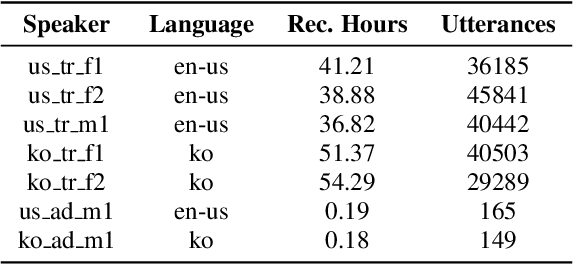
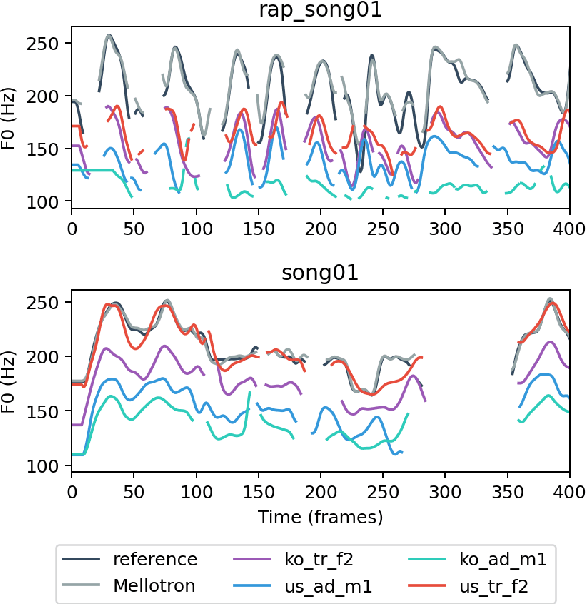
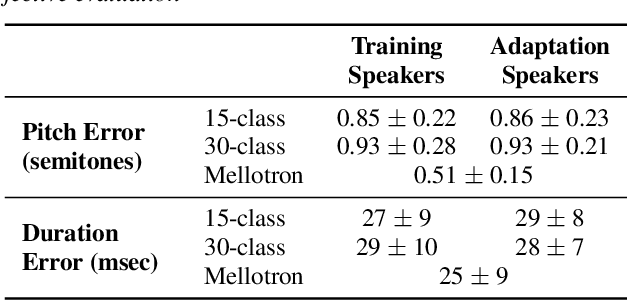
Abstract:In this paper, a text-to-rapping/singing system is introduced, which can be adapted to any speaker's voice. It utilizes a Tacotron-based multispeaker acoustic model trained on read-only speech data and which provides prosody control at the phoneme level. Dataset augmentation and additional prosody manipulation based on traditional DSP algorithms are also investigated. The neural TTS model is fine-tuned to an unseen speaker's limited recordings, allowing rapping/singing synthesis with the target's speaker voice. The detailed pipeline of the system is described, which includes the extraction of the target pitch and duration values from an a capella song and their conversion into target speaker's valid range of notes before synthesis. An additional stage of prosodic manipulation of the output via WSOLA is also investigated for better matching the target duration values. The synthesized utterances can be mixed with an instrumental accompaniment track to produce a complete song. The proposed system is evaluated via subjective listening tests as well as in comparison to an available alternate system which also aims to produce synthetic singing voice from read-only training data. Results show that the proposed approach can produce high quality rapping/singing voice with increased naturalness.
Cross-lingual Low Resource Speaker Adaptation Using Phonological Features
Nov 17, 2021


Abstract:The idea of using phonological features instead of phonemes as input to sequence-to-sequence TTS has been recently proposed for zero-shot multilingual speech synthesis. This approach is useful for code-switching, as it facilitates the seamless uttering of foreign text embedded in a stream of native text. In our work, we train a language-agnostic multispeaker model conditioned on a set of phonologically derived features common across different languages, with the goal of achieving cross-lingual speaker adaptation. We first experiment with the effect of language phonological similarity on cross-lingual TTS of several source-target language combinations. Subsequently, we fine-tune the model with very limited data of a new speaker's voice in either a seen or an unseen language, and achieve synthetic speech of equal quality, while preserving the target speaker's identity. With as few as 32 and 8 utterances of target speaker data, we obtain high speaker similarity scores and naturalness comparable to the corresponding literature. In the extreme case of only 2 available adaptation utterances, we find that our model behaves as a few-shot learner, as the performance is similar in both the seen and unseen adaptation language scenarios.
High Quality Streaming Speech Synthesis with Low, Sentence-Length-Independent Latency
Nov 17, 2021
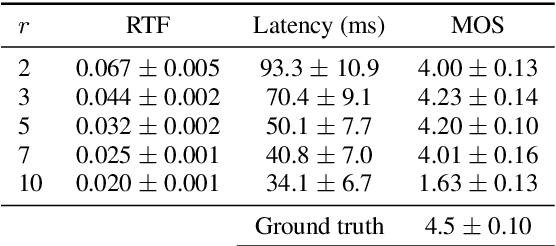
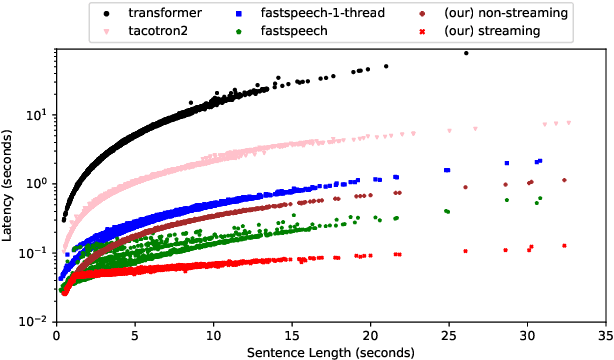
Abstract:This paper presents an end-to-end text-to-speech system with low latency on a CPU, suitable for real-time applications. The system is composed of an autoregressive attention-based sequence-to-sequence acoustic model and the LPCNet vocoder for waveform generation. An acoustic model architecture that adopts modules from both the Tacotron 1 and 2 models is proposed, while stability is ensured by using a recently proposed purely location-based attention mechanism, suitable for arbitrary sentence length generation. During inference, the decoder is unrolled and acoustic feature generation is performed in a streaming manner, allowing for a nearly constant latency which is independent from the sentence length. Experimental results show that the acoustic model can produce feature sequences with minimal latency about 31 times faster than real-time on a computer CPU and 6.5 times on a mobile CPU, enabling it to meet the conditions required for real-time applications on both devices. The full end-to-end system can generate almost natural quality speech, which is verified by listening tests.
 Add to Chrome
Add to Chrome Add to Firefox
Add to Firefox Add to Edge
Add to Edge